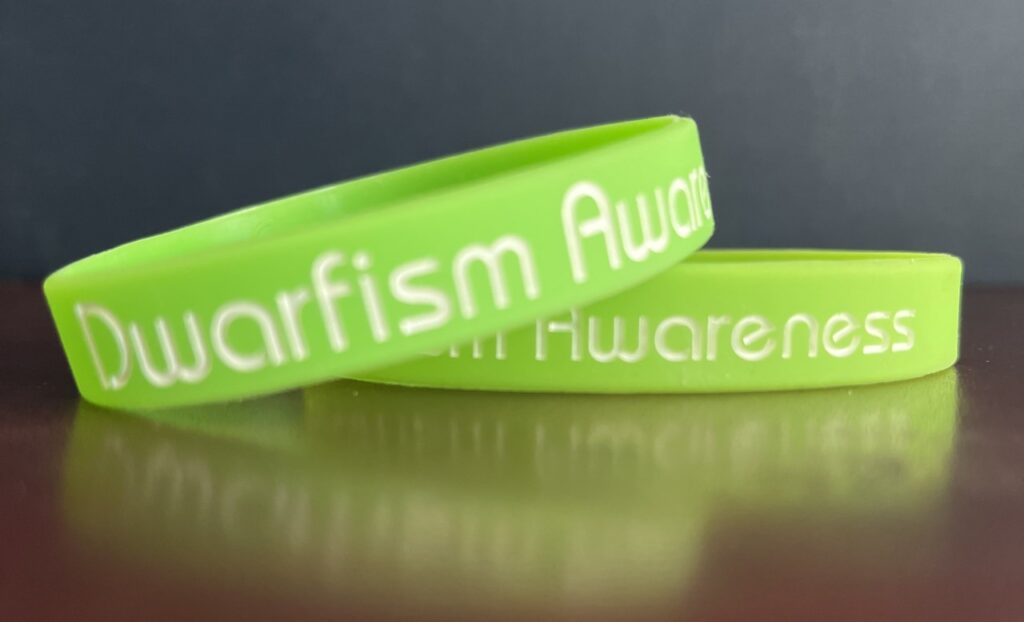
S ─ Speak with a normal voice volume, tone and subject matter.
- Don’t change tone of voice to match the one used when speaking to a child.
- It’s not taboo to use idioms like “It’s a small world.” It was appropriate for an observer to say this when five years after graduation I met someone from my law school class halfway around the world.
Want to subscribe to receive blog updates sign up today!
E ─ Equal treatment is expected:
- Not pity allowing emotions to run amok.
- Not paternalism; offer a handshake not a handout.
- Not a pedestal that elevates us to superhero.
- Not special treatment, but accommodations that level the playing field.
N ─ Names matter. Call someone with dwarfism by their name rather than describe them by their height. Avoid offensive words like midget, crippled, hunchback, retarded, and dumb. Drop the list of demeaning synonyms for short-stature like pint-size, runt, shrimp, shorty, or stumpy.
S ─ See the little person’s character and abilities not the outward appearance.
“But the Lord said to Samuel, “Do not look at his appearance or at the height of his stature, because I have rejected him; for God does not see as man sees, since man looks at the outward appearance, but the Lord looks at the heart.” 1 Samuel 16:7. New American Standard Bible.
I ─ Independence is highly valued by people with dwarfism as seen in the demand for:
- Accessible and usable public buildings and facilities.
- Accessible work spaces and off-site events.
- Access to public or private transportation, including driving our own vehicle.
T ─ Treat people with dignity and respect:
- Service representatives should talk directly to the little person in front of them not to their companion who the representative assumes speaks for them.
- Don’t condescendingly pat a little person on the head. And certainly don’t reach over a little person’s head to avoid waiting in line.
- Respect the personal space of someone using a wheelchair or scooter. In other words, the armrest or writing surface is not free space to be appropriated.
I ─ Imagine yourself in the other person’s shoes. Not so that you thank God you are not the one with dwarfism, but to be sensitive to needs.
V ─ Value differences.Remember each little person is an individual and will have their own way of doing things. For example, some lower counters in their homes, others use stools and climb; some drive with pedal extensions, others use hand controls; and, when talking to average-size people, some little people prefer they kneel down or crouch for an eye-to-eye conversation, others don’t want any concession to height differences.
I ─ Interact as you do with any person. Common courtesy applies. Adults should not ask personal questions. Children are given a pass when their curiosity opens the door to a learning opportunity.
T ─ Take cues from the person with dwarfism. Ask if help is needed before rushing in and creating a problem.
Y ─ be Yourself. Relax. Joke. Smile. Encourage.
This post is based on principles and examples found in books I and II of my dwarfism memoir trilogy: Dwarfs Don’t Live in Doll Houses and PASS ME YOUR SHOES: A Couple with Dwarfism Navigates Life’s Detours with Love and Faith,https://angelamuirvanetten.com/books/.
You may also like prior posts:
- Can I Help You? Angela Muir Van Etten blog. June 6, 2022. https://angelamuirvanetten.com/can-i-help-you/
- What Should I Call You? Angela Muir Van Etten blog. November 2, 2020. https://angelamuirvanetten.com/what-should-i-call-you/
- How Old Are You? Angela Muir Van Etten blog. August 24, 2020. https://angelamuirvanetten.com/?s=How+Old+Are+You%3F

2 replies on “DWARFISM SENSITIVITY & AWARENESS”
Very helpful. Thank you.
Good stuff on here